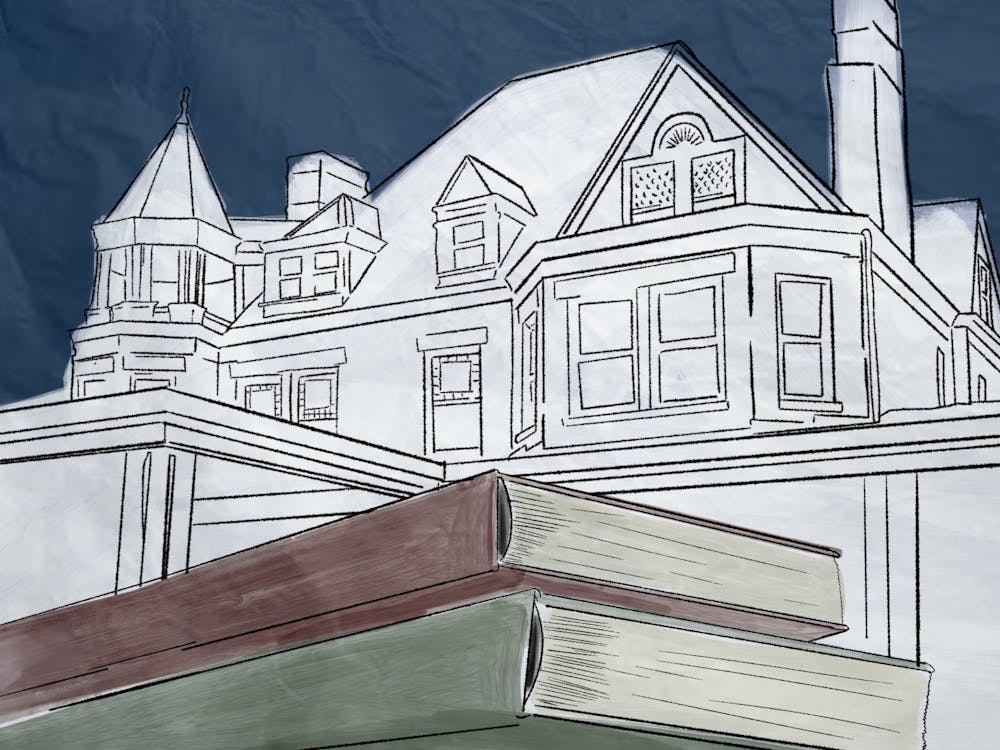In one of the first scenes of “Dick Johnson is Dead” — a documentary released to Netflix users last Friday — the titular leading man is struck by a falling air conditioner unit while walking, and is subsequently shown dead on a city sidewalk. His still figure lies there for an almost uncomfortable period of time, until he finally gets up aided by various members of a movie crew. This is the father of Kirsten Johnson, a prolific documentarian and cinematographer who has taken on the unique task of producing elaborate, imaginary death scenes for her father in “Dick Johnson is Dead,” complete with multiple stunt doubles and gruesome special effects. He falls down the stairs. He is struck by oncoming traffic. The list goes on. Kirsten Johnson weaves these sometimes comical, often upsetting fictional displays into a more general documentary style, cataloguing her father’s life as it nears its end in the real world. Though this endeavor may seem macabre, it actually proves to be a poignant exploration of how to meaningfully talk about death and how to cherish loved ones.
All of these elaborately produced deaths have one thing in common — they’re always fast, brutal accidents. In contrast, Johnson’s real-life death is being caused by a tragedy that works much more slowly than a falling air conditioning unit — dementia. Johnson utilizes the faux-deaths, which she achieves through the magic of cinema, to better face the horrifying slow-burn of losing a parent bit by bit. In these death scenes, Johnson can watch her dad walk away unscathed, through the lens of a camera. The rapid cycle of demise in tandem with her father is a creation they can have complete control over — a remedy to the fact that Johnson’s real, inevitable death is not something that can be cleanly walked away from. Despite the emphasis on the brutality of death, there are uplifting fictional moments as well — including a series of scenes that imagine Johnson’s “heaven” as a glittery paradise with chocolate fountains and dance floors to share with his late wife. All of this disturbing and extraordinary surrealism comes together to encompass Johnson’s overarching goal — to crystallize and preserve the life of her beloved father with the beautiful escapism that the medium of film allows.
The absurdist recreations of death and the afterlife that make this film particularly unique are interspersed with more traditional documentary moments. “Behind-the-scenes” conversations of the father-daughter pair are shown, during which the two explore the peculiarity — and often the hilarity — of what they are doing together. Tender, intimate moments with the family, such as Dick’s 86th birthday party, are also important fixtures of the film. These scenes, which endear the viewer to Johnson’s joyous personality and his loving relationship with his daughter, ground the film in the bittersweet reality of this family’s life, plagued by a lingering grief that is yet to truly come. In one particularly harrowing early scene, Johnson is forced to tell her father that he won’t be driving his car anymore, because he is moving to New York City with her. The pair cry together, sharing with each other and with the audience the understanding that this car was a symbol of independence to Johnson which he has now lost. These kinds of moments remind viewers of the ongoing tragedy that Kirsten and Dick are facing, as the former loses her father and the latter loses parts of himself, even as they try to inject those losses with some levity. The combination of the incredibly whimsical moments with the saddening realism of the family’s everyday losses makes this an spectacular viewing experience that is truly unlike any documentary that precedes it.
The film’s goal of embracing grief is one that feels particularly moving now, in a world where the grief of the COVID-19 pandemic is simply a fixture of everyday life. Death is often at the forefront of conversation lately, but the significance of it is also constantly obscured — often reduced to statistics and numbers. This is what makes this film’s tragic intimacy and radical reaction to the presence of death so important — it reminds the audience that death is simultaneously universal and deeply personal. In “Dick Johnson is Dead,” Dick Johnson is very much alive. He dies many times, but his charming character and the amazing love shared between him and his daughter light up the screen with a celebratory passion for life. The film will inevitably compel anyone who sees it to think meaningfully about what it means to witness and be a part of the lives of those they care about. In a time where life can appear especially fragile, this is an incredible message to receive.





